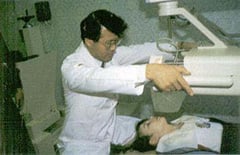Foundation History 1971-1990
1971|Disaster Relief After Earthquake Hits Turkey
The Foundation provides its first overseas emergency assistance after a huge earthquake strikes eastern Turkey in May 1971. From then on, providing assistance in the wake of major disasters, including earthquakes, fires, floods, and other catastrophes in Japan and overseas, becomes established as part of the Foundation’s disaster relief program.
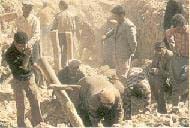
1974|Opening of the Museum of Maritime Science
After nine years of planning and construction, the Museum of Maritime Science opens in Odaiba (a man-made island in Tokyo Bay formerly called “District 13”). Displayed in front of the museum, which is shaped like an ocean liner, is Japan’s first Antarctic observation ship, Soya.
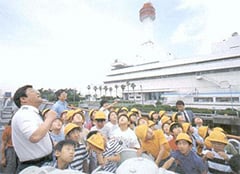
1975|Start of Leprosy Elimination Activities
The Foundation’s full-scale efforts to eliminate leprosy in collaboration with the World Health Organization get underway with the establishment of the Sasakawa Memorial Health Foundation in 1974. Prior to this, Ryoichi Sasakawa, the Foundation’s chairman, had provided assistance to India, the Philippines, South Korea, Taiwan, and other countries on a personal basis. The Sasakawa Memorial Health Foundation also joins forces with WHO for the elimination of smallpox, which is declared eradicated in 1980.

1977|Start of Refugee Relief Activities
Cooperation is provided to the Office of the UN High Commissioner for Refugees to help displaced persons from Angola, the Philippines, Zaire (present-day Democratic Republic of the Congo), Zimbabwe, and Ethiopia. Assistance for the UN Relief and Works Agency for Palestine Refugees in the Near East also commences.
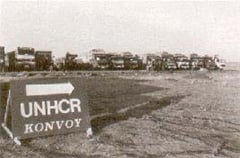
1981|Full-Scale Overseas Cooperation Begins
Private-sector exchanges are promoted through the establishment of the United States-Japan Foundation in 1980, the Great Britain Sasakawa Foundation in 1983, the Scandinavia-Japan Sasakawa Foundation in 1985, and the Fondation Franco-Japonaise Sasakawa in 1990.
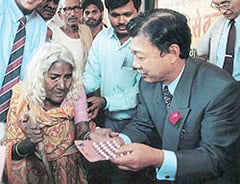
1984|Assisting Japanese Orphans Stranded in China After World War II
The Japanese government launches a program to resettle Japanese war orphans who were left behind in China at the end of World War II. Based on broad private-sector support, an endowment is established in 1983, and the following year the Foundation starts making contributions. In 1984 alone, investigations conducted by the Japanese government identify next of kin in Japan for 733 of the 1,527 war-orphans still living in China, and 170 of them are successfully resettled in Japan.
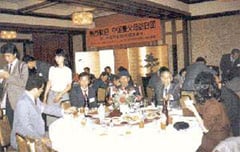
1984-86
Establishing Prizes with the UN and WHO
Three prestigious prizes are established at the United Nations and the World Health Organization: (1) the World Health Organization Sasakawa Health Prize; (2) the United Nations Environment Programme’s UNEP Sasakawa Prize; and (3) the United Nations Sasakawa Award for Disaster Reduction. Prizes are awarded to one or more persons, institutions, or nongovernmental organizations that make an outstanding contribution to their respective field. The prizes consist of prize money and certificates or statuettes.

1986
Feeding the People of Africa
In response to the Ethiopian famine of the mid-1980s, the Foundation creates the Sasakawa Africa Association with the aim of alleviating regional reliance on food aid and building agricultural self-sufficiency in sub-Saharan Africa. The Sasakawa Global 2000 program is launched to help smallholder farmers increase productivity and improve their incomes.
See Dedicated to Ending Famine in Africa for more.
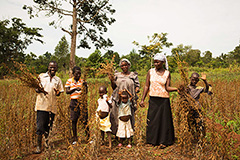
1987
Establishing the Ryoichi Sasakawa Young Leaders Fellowship Fund (Sylff)
A fund to support graduate students studying in the fields of the social sciences, humanities, and the performing arts is launched. Endowments of $1 million are provided to 69 universities and consortia in 44 countries.
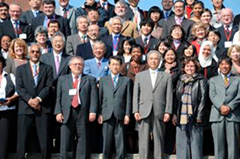
1989|Research and Development of Next-Generation High-Speed Techno Superliner
The Foundation begins assisting with the development of a next-generation ultra-high-speed cargo vessel, the Techno Superliner (TSL), by a research consortium established by shipbuilding and steel companies. From 1989 to 1995, the government and private sector join hands to develop a vessel capable of cruising at 50 knots (about 93 kilometers an hour), carrying a payload of 1,000 tons, and covering a distance of 500 nautical miles (930 kilometers). Component technologies are researched, and comprehensive experiments are conducted on two ship prototypes, enabling the acquisition of technology for construction and operation of the TSL.
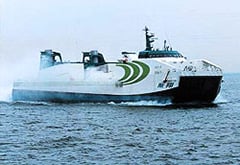
1990|Relief Assistance Following the Chernobyl Nuclear Power Plant Accident
In response to a request for private-sector medical assistance by the Soviet government, which was unable to formulate a quick and effective response, medical cooperation is provided through the Sasakawa Memorial Health Foundation to the victims of the 1986 Chernobyl nuclear power plant accident.
